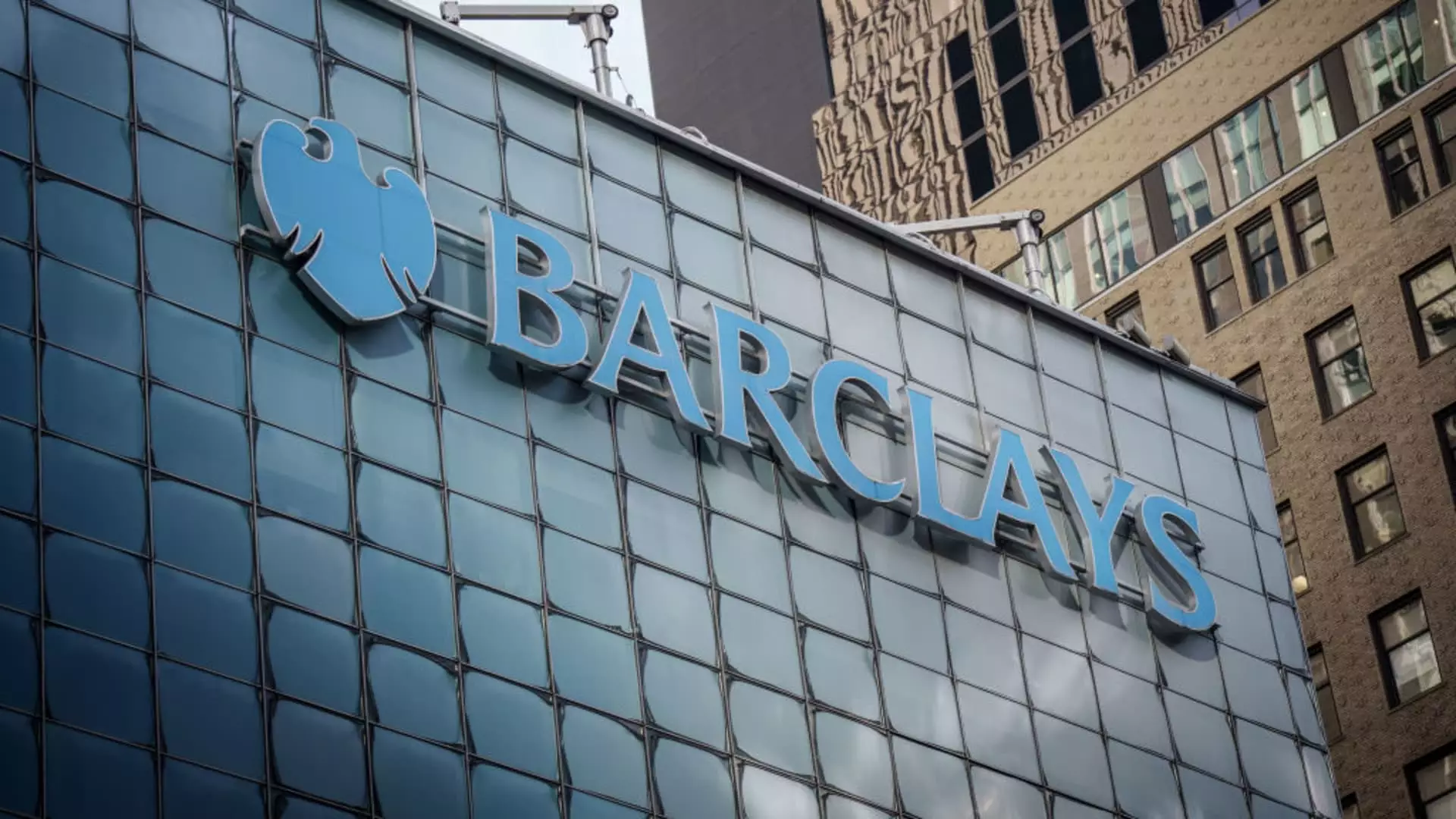Barclays, the renowned British bank, has recently reported impressive financial results for the first quarter, showcasing resilience and adaptability in a tumultuous economic landscape. With pre-tax profits soaring to £2.7 billion ($3.6 billion), representing an 11% year-on-year increase and surpassing analyst expectations, Barclays is a shining example within the banking sector. Investors can’t help but admire the bank’s robust performance, particularly its investment banking arm, which remains the linchpin of its profitability.
Investment Banking: The Heart of Resilience
The bank’s investment banking division has recorded a remarkable 16% increase in income to £3.87 billion, eclipsing projections and affirming its status as Barclays’ most lucrative segment. This substantial growth speaks volumes about the bank’s ability to navigate market fluctuations and capitalize on trading opportunities. In a world fraught with uncertainty, the investment banking sector stands out as a beacon of hope and a significant driver for the bank’s overall performance.
Barclays’ return on tangible equity surged to 14%, a stark contrast to the previous quarter’s average of 7.5%. Such a leap underscores the bank’s strategic prowess and operational efficiency, which are crucial for weathering economic storms. Even more impressively, this performance comes as many competing institutions grapple with the fallout from recent geopolitical tensions and trade wars.
Market Volatility: A Double-Edged Sword
CEO C.S. Venkatakrishnan has not shied away from acknowledging the challenges that lie ahead. In recent interviews, he expressed that a continuous rise in market volatility could act as both a risk and an opportunity. “While the current atmosphere is relatively calm, we need to be prepared for the inevitable ups and downs,” he remarked. His perspective is crucial for understanding how Barclays plans to maneuver its extensive U.S. market exposure amid ongoing global trade tensions.
Venkatakrishnan’s strategic focus on volatility as an opportunity is indicative of a forward-thinking approach. The bank’s ability to manage risk while helping clients navigate uncertain markets enhances both its reputation and profitability. The emphasis on fixed income trading as a specific area of strength further solidifies Barclays’ commitment to staying ahead of the curve.
U.S. Exposure: The Balancing Act
The bank’s significant U.S. exposure, particularly following its acquisition of the investment banking operations of Lehman Brothers, positions it uniquely in the current climate. Many analysts are acutely aware that this exposure could be a double-edged sword. Rising trade tariffs initiated by U.S. policies may impact economic activities, yet Barclays appears committed to leveraging its presence in the U.S. effectively. The recently reported 9.1% return on tangible equity from its U.S. consumer bank shows that the British lender is finding ways to turn challenges into opportunities.
However, Venkatakrishnan remains cautious. He suggests that economic uncertainty could stifle decision-making among corporations and individuals alike. “Even with a solid starting point, the specter of economic weakness looms large,” he noted, highlighting that the potential for a slow-down in both U.K. and U.S. markets is ever-present.
Implications of Brexit: A Mixed Bag
The British bank also faces challenges stemming from the broader implications of Brexit, with both risks and opportunities on the horizon. The recently concluded trade discussions revealed potential tariffs that could allow Britain to carve out a more favorable trade position with the United States. While this presents an opportunity, the overall climate of uncertainty can weigh heavily on consumer and corporate confidence.
Moreover, competitors such as HSBC are reconsidering their strategies in the U.K. market—which has led to job cuts and branch closures—signal a potential shrinking of the banking landscape in the region. Barclays must navigate these shifts skillfully to maintain its competitive edge while securing its position in a rapidly changing environment.
Looking Ahead: Navigating Uncertainty
Barclays is poised at a critical juncture as it strives to maintain its market position amidst ongoing uncertainty. The bank’s effective risk management strategies, combined with its capacity to leverage market volatility for profit, will determine its trajectory moving forward. As it continues to adapt to the realities of a post-Brexit world and a shifting global economic landscape, the focus on innovation and strategic foresight will be paramount.
In these challenging times, Barclays’ performance serves as a testament to the potential for resilience in the banking industry, offering a roadmap of sorts for others striving to thrive in the face of adversity. As the bank moves forward, one can expect that its approach will continue to evolve, shaping not only its future but also the broader financial landscape.

